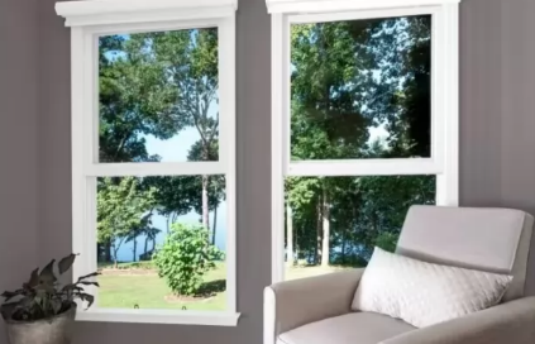The demand for aluminum fly screens has increased significantly in recent years, driven by urban development, growing awareness of insect-borne diseases, and the need for sustainable ventilation solutions. This trend spans the construction, agriculture, hospitality, and residential improvement sectors.
At the same time, rising costs for raw materials and transportation are placing pressure on project budgets. For organizations purchasing in bulk—such as developers outfitting hundreds of apartments or facility managers upgrading commercial buildings—smart procurement is essential to reduce expenses without compromising quality.
This report outlines five proven strategies to help buyers lower costs when sourcing aluminum fly screens at scale.

One of the most effective ways to reduce the unit cost of aluminum fly screens is to plan order quantities strategically. Larger orders benefit from economies of scale, where fixed costs such as tooling, packaging, and shipping setup are spread across more units, resulting in a lower price per square meter.
Recommended Actions:
· Consolidate purchases across multiple projects or timelines to reach higher volume tiers.
· Inquire about tiered pricing models—many suppliers offer significant discounts when orders exceed certain thresholds (e.g., 500 m² vs. 1,000 m²).
· Coordinate with other departments or affiliated projects to combine purchasing power and qualify for better pricing.
Example: A construction company reduced its per-square-meter cost by 28% by consolidating three separate project orders into a single 1,200 m² purchase.
Over-specifying performance features can lead to unnecessary spending. While high-density, fine-weave mesh is critical in certain environments, many applications can use standard-grade materials without sacrificing functionality.
Key Specification Considerations:
· Mesh Count: Higher counts block smaller insects but use more material and cost more.
· Wire Gauge: Thicker wires increase durability but also add weight and cost.
· Surface Treatment: Anti-corrosion or UV-resistant coatings extend lifespan but may not be needed for indoor or low-exposure installations.
Application-Based Examples:
· For a warehouse in a rural area: Standard 14x14 mesh with basic powder coating is sufficient.
· For a seaside hotel: Fine 18x16 mesh with anti-corrosion treatment is recommended to resist salt air and sand flies.
By aligning technical specifications with actual usage conditions, buyers can avoid paying for features that provide no added benefit.
Many procurement teams rely on local distributors for convenience. However, this often results in higher prices due to intermediary markups that can range from 20% to 40%.
Advantages of Direct Sourcing:
· Lower unit prices without distributor margins.
· Greater flexibility in customization, including size, packaging, and branding.
· Faster communication with production and quality control teams.
· Direct access to factory certifications and test reports.
How to Identify Reliable Manufacturers:
· Verify quality management certifications such as ISO 9001.
· Prioritize suppliers with export experience to your region.
· Request physical samples before placing large orders to assess quality and fit.
Direct sourcing, especially from manufacturers in Asia with export capabilities, can offer substantial cost savings while maintaining high quality.
Freight and logistics can account for 20% to 30% of the total landed cost of aluminum fly screens. Efficient planning is essential to minimize these expenses.
Cost-Saving Logistics Strategies:
· Use Full Container Loads (FCL): Shipping a full container is typically more cost-effective than multiple Less-than-Container Load (LCL) shipments.
· Choose Efficient Packaging: Rolls often pack more densely than rigid panels, reducing shipping volume.
· Negotiate Long-Term Freight Agreements: Buyers with recurring needs can secure better rates through contracts with freight forwarders.
· Distribute Regionally: For multi-site projects, arrange for direct delivery to regional hubs to reduce domestic trucking costs.
Case Study: A real estate developer with projects in three cities arranged for a single bulk shipment to be split and delivered directly to each city’s port. This approach reduced inland transportation costs by 18%.
Pricing for aluminum products is influenced by seasonal demand and global commodity trends. Construction peaks in spring and summer often lead to higher prices for both materials and shipping.
Strategies for Timing Your Purchase:
· Place bulk orders during low-demand periods such as January to March, when suppliers are more willing to negotiate.
· Monitor global aluminum price indexes (e.g., LME) to identify favorable buying windows.
· Ask suppliers about overstock or clearance items from previous production runs.
Example: A hotel chain saved 12% on its annual fly screen order by placing it in February instead of May, taking advantage of post-holiday production availability.
Several long-term trends support the case for strategic bulk buying:
· Rapid growth in urban high-rise developments is increasing demand for standardized, durable insect screening.
· Stricter health and safety regulations in hospitality and food service sectors now require certified insect barriers.
· Consumers and developers are increasingly choosing aluminum over plastic due to its durability, recyclability, and fire resistance.
· Supply chain uncertainties make early procurement a smart way to lock in pricing and secure inventory.
Bulk purchasing is no longer just a cost-saving tactic—it is a strategic move to ensure supply stability and cost predictability.
Reducing project costs when buying aluminum fly screens does not mean compromising on quality. Instead, it requires thoughtful planning and a strategic approach to procurement.
By implementing these five strategies—optimizing order size, selecting appropriate specifications, sourcing directly from manufacturers, improving logistics efficiency, and timing purchases wisely—procurement teams can achieve significant savings while maintaining high performance and reliability.
Used together, these methods can reduce total project costs by 20% to 40%, delivering long-term value for organizations across industries.
Jiushen specializes in high-quality aluminum fly screens for bulk buyers. We offer:
· Competitive pricing with volume-based discounts
· Customizable mesh specifications (count, gauge, coating)
· Direct factory production and export support
· Flexible packaging and logistics coordination
· Sample availability and quality assurance documentation
Contact us today to request a quote or receive a free sample.
Copyright © Hebei Jiushen Wire Weaving Co., Ltd. All Rights Reserved. |
Sitemap
| Technical Support:
